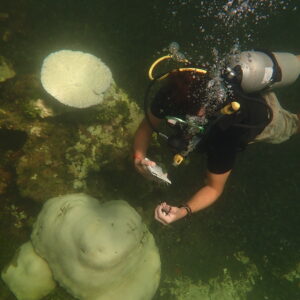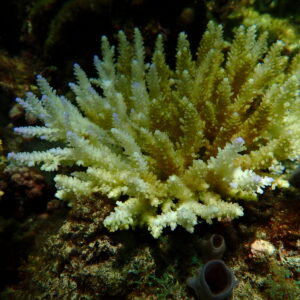Introduction
In the mesmerizing depths of our oceans lies a wonder of nature: the coral reefs. These vibrant ecosystems, often called the rainforests of the sea, teem with life and color, providing a habitat for a myriad of marine creatures. However, beneath their beauty lies a silent crisis – coral bleaching.
The Marvels of Corals
Corals are marine invertebrates that form colonies, primarily found in tropical oceans where the water is clear and shallow. They come in a variety of shapes, sizes, and colors, ranging from the branching Acropora to the massive brain corals. Despite their stony appearance, corals are living organisms, with tiny polyps building calcium carbonate skeletons over generations, forming the intricate structures we recognize as coral reefs.
These reefs serve as vital ecosystems, supporting a quarter of all marine life despite covering less than one percent of the ocean floor. They protect coastlines from erosion, provide food for millions of people, and are hotspots of biodiversity.
The Bleaching Plague
Coral bleaching is a phenomenon that occurs when corals expel the algae living in their tissues, causing them to turn white. These algae, called zooxanthellae, provide corals with their vibrant colors and most of their energy through photosynthesis. When corals are stressed due to changes in conditions like temperature, light, or pollution, they expel these algae, leaving behind a pale, ghostly skeleton.
The primary driver of coral bleaching is rising sea temperatures, attributed to climate change. As oceans warm, corals experience heat stress, leading to bleaching events on a large scale. Other stressors like pollution, overfishing, and ocean acidification exacerbate the problem, making corals more vulnerable to bleaching.
The Devastating Impact
Coral bleaching is not just an aesthetic issue; it has severe consequences for marine ecosystems and the millions of people who depend on them. When corals bleach, they become weak and more susceptible to disease, reducing their ability to provide habitat and support marine life. This can lead to a collapse of entire reef ecosystems, causing ripple effects throughout the food chain.
Furthermore, coral reefs contribute significantly to the economy through tourism, fisheries, and shoreline protection. The loss of coral reefs can devastate coastal communities that rely on these resources for their livelihoods.
Hope on the Horizon
Despite the bleak outlook, there is hope for the future of corals. Conservation efforts such as marine protected areas, sustainable fishing practices, and reducing carbon emissions can help mitigate the impacts of coral bleaching. Scientists are also exploring innovative solutions like coral restoration and breeding programs to enhance the resilience of corals to stressors.
Individuals can also make a difference by reducing their carbon footprint, supporting sustainable seafood, and raising awareness about the importance of coral reefs. By coming together and taking action, we can protect these invaluable ecosystems for generations to come.
Conclusion
Corals and coral bleaching represent a critical environmental issue that demands our attention and action. As stewards of the planet, it is our responsibility to protect these fragile ecosystems and ensure a sustainable future for marine life and coastal communities. By understanding the marvels of corals and the threats they face, we can work towards solutions that preserve these underwater wonders for future generations to marvel at.
Our marine team at A Rocha Kenya is keen to follow up and find out just how best can we prevent or reduce the risks of killing the entire colonies that we have at the moment. Feel free to support our work and volunteer with us.

